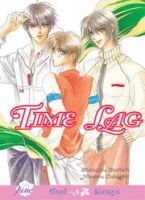Support manga, support your library!
Here’s what I’ve been reading:
 Arisa, Volumes 5-7 by Natsumi Ando. As ridiculous and unbelievable as Arisa can be, I’ll have to admit that I actually am rather enjoying the series. The number of plot twists that Ando works into the manga is astounding. I know that they’re coming, but I have no idea where Arisa is going. I’ve learned not to stress out about it and just sit back and enjoy the absurdity as it develops. However, I can’t help but wonder where all the adults are in all of this. Occasionally a teacher, parent, or guardian is seen, but none of them seem very involved in the students’ lives at all. But then again, that might be part of the point of the series. The students in class 2-B have issues (they have a lot of issues) and King Time began in part because their needs and concerns weren’t being addressed elsewhere. More and more of their secrets are being revealed, but I’m not sure we’re any closer to actually learning who the King really is. Arisa continues along its dark and twisted path and I can’t help but be oddly mesmerized by the whole thing.
Arisa, Volumes 5-7 by Natsumi Ando. As ridiculous and unbelievable as Arisa can be, I’ll have to admit that I actually am rather enjoying the series. The number of plot twists that Ando works into the manga is astounding. I know that they’re coming, but I have no idea where Arisa is going. I’ve learned not to stress out about it and just sit back and enjoy the absurdity as it develops. However, I can’t help but wonder where all the adults are in all of this. Occasionally a teacher, parent, or guardian is seen, but none of them seem very involved in the students’ lives at all. But then again, that might be part of the point of the series. The students in class 2-B have issues (they have a lot of issues) and King Time began in part because their needs and concerns weren’t being addressed elsewhere. More and more of their secrets are being revealed, but I’m not sure we’re any closer to actually learning who the King really is. Arisa continues along its dark and twisted path and I can’t help but be oddly mesmerized by the whole thing.
 Cowa! by Akira Toriyama. Cowa! had completely slipped under my radar until just recently. It’s a shame that I didn’t read it sooner because it is a terrific and highly enjoyable manga appropriate for kids as well as adults. The first few chapters are fairly episodic and start out with Paifu, a young half-vampire/half-werekoala, and his best friend and ghost José Rodriguez getting into all sorts of trouble. But then the manga develops a continuing story—Paifu’s hometown of Batwing Ridge is suffering from an epidemic of the Monster Flu. It’s up to Paifu, José, their not exactly friend Apron, and Maruyama, a grumpy ex-sumo wrestler, to save the day. Together they travel in search of the cure and it ends up becoming quite an adventure. There’s action and danger, bad guys and monsters. The interactions between Maruyama and the youngsters are simply marvelous. The manga is a lot of fun and funny, too. It may be silly at times, but it’s also heartwarming and has a good message. Cowa! is an absolute delight and definitely worth a look.
Cowa! by Akira Toriyama. Cowa! had completely slipped under my radar until just recently. It’s a shame that I didn’t read it sooner because it is a terrific and highly enjoyable manga appropriate for kids as well as adults. The first few chapters are fairly episodic and start out with Paifu, a young half-vampire/half-werekoala, and his best friend and ghost José Rodriguez getting into all sorts of trouble. But then the manga develops a continuing story—Paifu’s hometown of Batwing Ridge is suffering from an epidemic of the Monster Flu. It’s up to Paifu, José, their not exactly friend Apron, and Maruyama, a grumpy ex-sumo wrestler, to save the day. Together they travel in search of the cure and it ends up becoming quite an adventure. There’s action and danger, bad guys and monsters. The interactions between Maruyama and the youngsters are simply marvelous. The manga is a lot of fun and funny, too. It may be silly at times, but it’s also heartwarming and has a good message. Cowa! is an absolute delight and definitely worth a look.
 Slam Dunk, Volumes 7-10 by Takehiko Inoue. I am a huge fan of Inoue’s manga. While Slam Dunk isn’t my favorite of his series, I still find it to be a great manga. Slam Dunk was Inoue’s breakthrough work and is immensely popular and influential. The basketball games in Slam Dunk are extremely well done, but so far what appeals most to me about the series is the characters. I particularly enjoy all of the delinquents that show up in the series and on Shohoku’s basketball team. The guys are just as capable in a fist fight as they are on the court. Granted, Sakuragi still has a lot to learn about basketball. He has some natural ability and potential, but I’m not sure anyone has actually taken the time to explain all the rules to him. Realistically, this is somewhat unbelievable, but it does provide a certain amount of humor. In general, Slam Dunk is much more comedic than Inoue’s other manga available in English. However, there’s still some seriousness and plenty of heartfelt passion in the series, too.
Slam Dunk, Volumes 7-10 by Takehiko Inoue. I am a huge fan of Inoue’s manga. While Slam Dunk isn’t my favorite of his series, I still find it to be a great manga. Slam Dunk was Inoue’s breakthrough work and is immensely popular and influential. The basketball games in Slam Dunk are extremely well done, but so far what appeals most to me about the series is the characters. I particularly enjoy all of the delinquents that show up in the series and on Shohoku’s basketball team. The guys are just as capable in a fist fight as they are on the court. Granted, Sakuragi still has a lot to learn about basketball. He has some natural ability and potential, but I’m not sure anyone has actually taken the time to explain all the rules to him. Realistically, this is somewhat unbelievable, but it does provide a certain amount of humor. In general, Slam Dunk is much more comedic than Inoue’s other manga available in English. However, there’s still some seriousness and plenty of heartfelt passion in the series, too.
 Time Lag written by Shinobu Gotoh and illustrated by Hotaru Odagiri. I didn’t realize it at first, but Odagiri is also the artist for Only the Ring Finger Knows, which I quite enjoyed. Time Lag is a slightly older work, and not quite as memorable, but still enjoyable and rather sweet. Satoru and Shirou used to be very close growing up, but after junior high they’ve grown apart despite Satoru repeatedly professing his love for the other young man. Satoru can’t seem to figure out what went wrong, but when a letter from Shirou arrives three years late he may have one last chance at setting things right. However, complicating matters even further is a love-triangle involving Seichii, another classmate. Plots that revolve around a giant misunderstanding often annoy me, but in the case of Time Lag I think it was handled very well. Some of the smaller misunderstandings were still frustrating, though. Granted, those deliberately created by Seichii and his jealousy make a fair amount of sense in the context of the story and the resulting drama is understandable.
Time Lag written by Shinobu Gotoh and illustrated by Hotaru Odagiri. I didn’t realize it at first, but Odagiri is also the artist for Only the Ring Finger Knows, which I quite enjoyed. Time Lag is a slightly older work, and not quite as memorable, but still enjoyable and rather sweet. Satoru and Shirou used to be very close growing up, but after junior high they’ve grown apart despite Satoru repeatedly professing his love for the other young man. Satoru can’t seem to figure out what went wrong, but when a letter from Shirou arrives three years late he may have one last chance at setting things right. However, complicating matters even further is a love-triangle involving Seichii, another classmate. Plots that revolve around a giant misunderstanding often annoy me, but in the case of Time Lag I think it was handled very well. Some of the smaller misunderstandings were still frustrating, though. Granted, those deliberately created by Seichii and his jealousy make a fair amount of sense in the context of the story and the resulting drama is understandable.


















